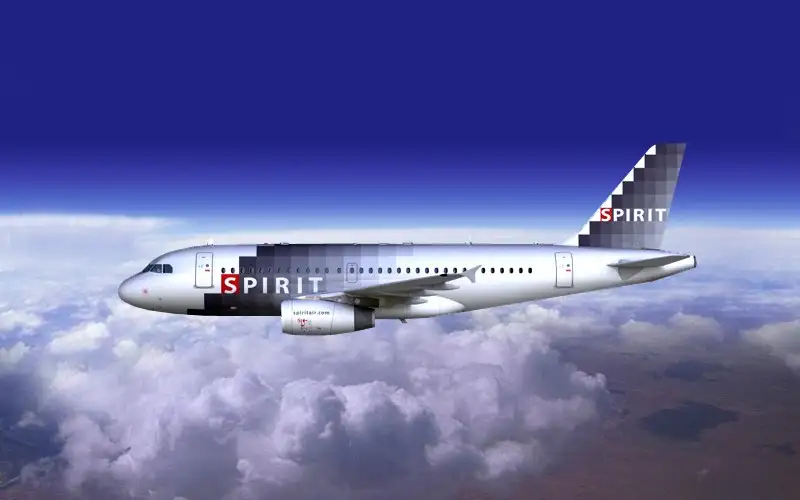
As business cases go, Spirit’s is a confounding one. The airline, paradoxically, manages to both draw the most customer complaints and enjoy the industry’s highest profit margin. Fuming flyers and ecstatic investors? As improbable as the picture seems, it’s an accurate one.
For most of its history, Spirit was more than comfortable with the disconnect. The company positively reveled in its ability to soar financially even as its passengers squirmed in their too-tight seats and griped about the seemingly endless list of fees charged by the carrier.
But judging from several of Spirit’s recent marketing and P.R. initiatives, the company has determined that the road to maximizing profitability lies in making nice with its customers, rather than antagonizing them. Not that the airline plans to change any of its customer-unfriendly policies. Rather, Spirit has publicly acknowledged its bottom-of-the-barrel reputation and is making an effort to make the case for its value proposition: a bare-bones flight in exchange for a very low price.
Apparently as part of that initiative to bring travelers’ expectations into alignment with Spirit’s product offering, Ben Baldanza, the company’s CEO, sat for an interview with Skift, a travel-industry website. Following are some of Baldanza’s remarks.
On Spirit’s “education” campaign: “We realized that there was enormous value in education and that the customers who understood the airline and the value proposition of the airline, had a much better chance of being happy with their purchase on Spirit, repeating purchases with Spirit, telling friends about it and things like that. So we partnered with branding agency, based in Kansas City, Missouri, the Barkley Group, to come up with ways we could be more transparent about our business model.”
On Spirit’s value proposition: “The idea of Bare Fare, simple as it sounds, should just in and of itself tell you that there’s something a little bit different about this than just a normal fare, and get people to understand a little better.
That’s just one small aspect of a broader initiative at Spirit in the way we talk to our customers on the website, the way we organize our airports, the language our reservations agents use, the way our airplanes look, the way we message to the media—all kinds of things. It’s all around a clearer understanding and more transparency around the true value proposition that Spirit offers, which is that we get you where you’re going for a lower price point, although they have to expect some compromise for that.”
On Spirit’s seating: “We put a lot of seats in our airplanes. A lot of the feedback that we get is that there are certainly customers who understand that when you have more seats on the plane everyone can pay a lower price, and that’s one of the trade-offs our customers accept knowingly, and they’re OK with that. But we do invest in good seats, and they are leather seats, and in some ways they are better than other airlines.”
On Spirit’s legroom: “It’s about a 28-inch pitch in general. That’s not true in every row, of course. Exit rows are a little more and we have the Big Front Seat product at the front of the plane that’s a little more, but the tightest pitch on our planes is about 28 inches. Which, by the way, that’s not an uncommon pitch in the U.S., especially in the regional space. If you fly on American, United or Delta and you wind up flying a regional jet or on a turboprop plane and sit on 28-inch pitch, even though those airlines will say that they give you more legroom than that.”
On “secret” Spirit flyers: “There are plenty of people who say they would never fly Spirit, and then they fly Spirit. Nobody likes to promote the fact that they shop at Walmart, but they’re the biggest retailer on the planet. People say what they want to do and then they behave in different ways sometimes.”
On converting Spirit’s critics: “It’s all about transparency. We let like to address our business model and we find that the more that we talk about our business model—even people who are initially negative about the model—we find that generally improves the situation.
I’m not going to say that people who hate Spirit end up loving Spirit after we talk to them about it. I’m not suggesting that. But what happens is that there are a lot of misconceptions about what Spirit is and things we do or a lot of misunderstandings about why we do things.”
Baldanza keeps coming back to one key idea: To know Spirit is to love it. Or at least not hate it. That seems pretty obvious. And if it’s effectively communicated, Spirit will be even more successful than it already is. Which means its planes will be even more packed than they have been, raising the claustrophobia quotient even further. Which gives flyers more reason than ever to pay extra to upgrade to a roomier seat. Which means even more profits for the company.
Maybe it’s time to invest in Spirit?
Reader Reality Check
Spirit: Love it or hate it?
This article originally appeared on FrequentFlier.com.
We hand-pick everything we recommend and select items through testing and reviews. Some products are sent to us free of charge with no incentive to offer a favorable review. We offer our unbiased opinions and do not accept compensation to review products. All items are in stock and prices are accurate at the time of publication. If you buy something through our links, we may earn a commission.
Related
Top Fares From
Today's Top Travel Deals
Brought to you by ShermansTravel
Kenya: 14-Night Tour, Incl. Tanzania &...
smarTours
 vacation
$7125+
vacation
$7125+
7-Night Caribbean Round-Trip Cruise From Orlando:...
Norwegian Cruise Line
 cruise
$739+
cruise
$739+
Ohio: Daily Car Rentals from Cincinnati
85OFF.com
 Car Rental
$19+
Car Rental
$19+



